I would be grateful for anyone's opinion: I am building a Hermann Rupp flint long rifle, ca. 1793, and have purchased cold metal browning solution that I was going to use on all exposed steel parts. Second thoughts since then as images of originals indicate no browning was used back in the day, or perhaps some other process was used. I really don't like the look of shiny steel, so I feel I need to do something. What have others done? Thanks.
-
Friends, our 2nd Amendment rights are always under attack and the NRA has been a constant for decades in helping fight that fight.
We have partnered with the NRA to offer you a discount on membership and Muzzleloading Forum gets a small percentage too of each membership, so you are supporting both the NRA and us.
Use this link to sign up please; https://membership.nra.org/recruiters/join/XR045103
You are using an out of date browser. It may not display this or other websites correctly.
You should upgrade or use an alternative browser.
You should upgrade or use an alternative browser.
To Blue or Not to Blue
- Thread starter Jkil
- Start date

Help Support Muzzleloading Forum:
This site may earn a commission from merchant affiliate
links, including eBay, Amazon, and others.
I use cold blue and let it fade to gray. It will easily wear off.
Phil Coffins
69 Cal.
A smooth dark brown is attractive and wears well. The same finish if boiled before oiling turns black and both will provide protection to your gun.
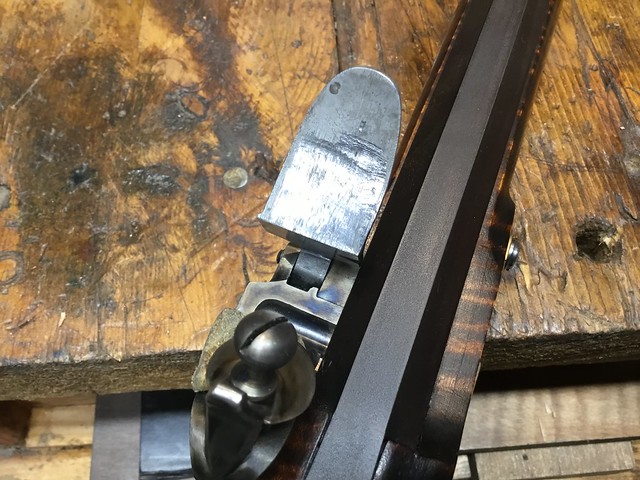 A78DC917-6454-43EA-97A2-D0B38526B11F by Oliver Sudden, on Flickr
A78DC917-6454-43EA-97A2-D0B38526B11F by Oliver Sudden, on Flickr
 A78DC917-6454-43EA-97A2-D0B38526B11F by Oliver Sudden, on Flickr
A78DC917-6454-43EA-97A2-D0B38526B11F by Oliver Sudden, on Flickr
Last edited:
Browning (or russeting as it was called then), rust blue, or bright finish would all be correct. In the 1790's I believe browning or a bright finish would have been popular. Some folks like the look of cold or rust blue scrubbed nearly back to the metal. Others have used bleach, mustard or other light acids to color and lightly pit the surface to give more of a patina-ed look.
I generally prefer rust browning or bluing for my firearms
I generally prefer rust browning or bluing for my firearms
- Joined
- Nov 26, 2005
- Messages
- 5,224
- Reaction score
- 10,884
Hi,
No browning if you want to be historically correct. It was becoming popular in England during the last decades of the 18th century but did not catch on in America until the 19th century. Rust bluing would also not be historically consistent for a 1790s Rupp. That said, eventually unfinished iron barrels turned brown with rust. You might try tarnishing the barrel with a light browning or use quick bluing, blue the barrel, and then rub it back to a light gray with Scotch Bright pads dipped in water. Here are some examples:

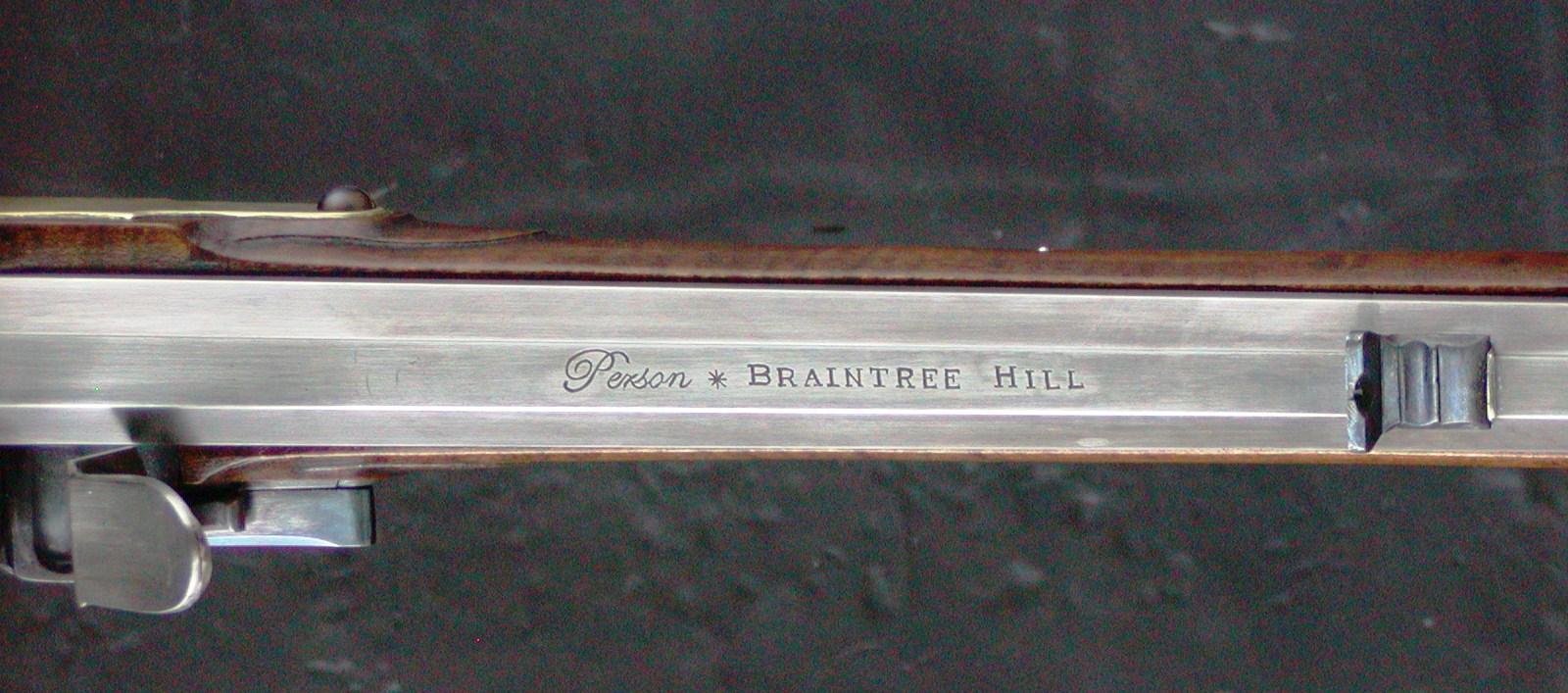

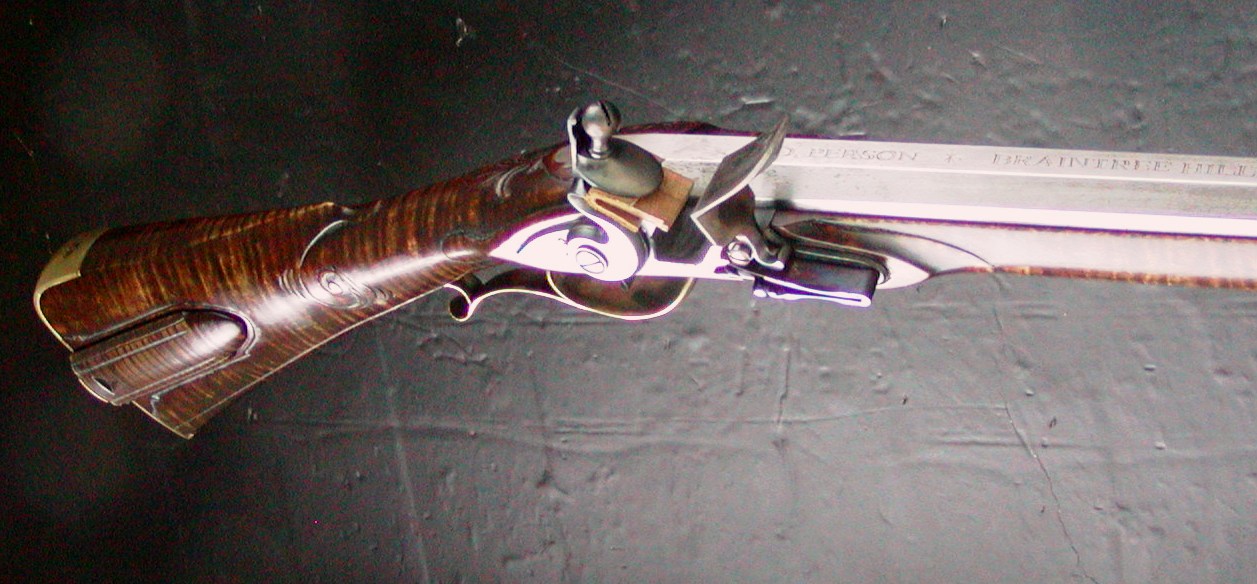
However, if you intend to do serious target shooting, I would brown the barrel even though it is not quite correct for the period. I urge you not to leave the lock with the textured cast finish and brown it thinking that would look authentic. It doesn't. Polish the lock plate, ****, and frizzen to get rid of the cast surface and leave it bright or temper blue it. Here are examples.
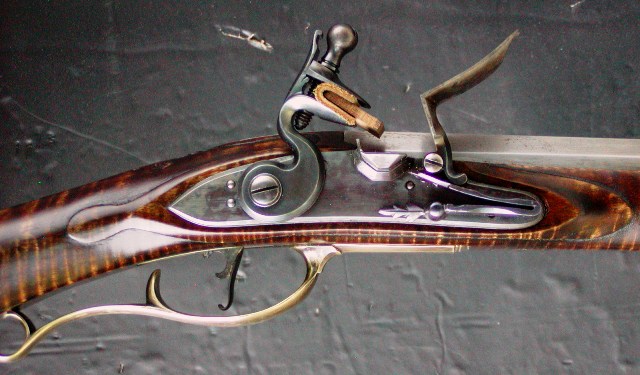
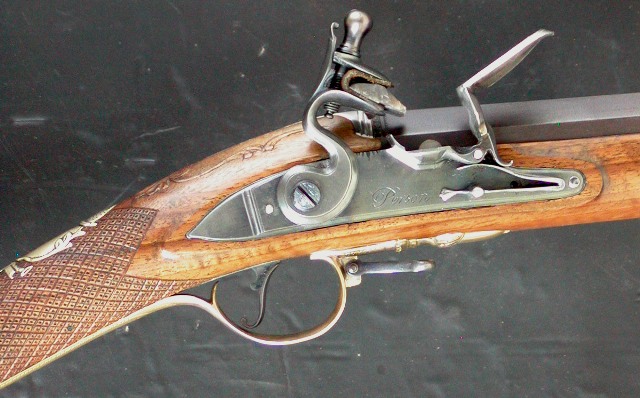
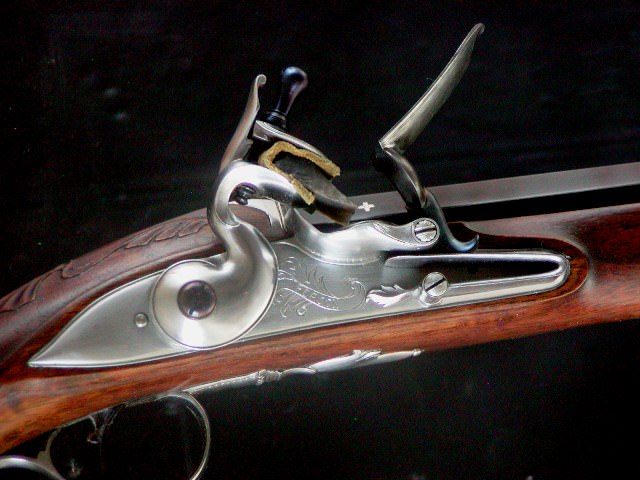
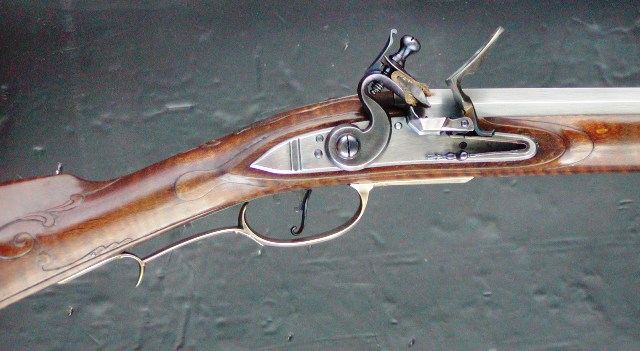
dave
No browning if you want to be historically correct. It was becoming popular in England during the last decades of the 18th century but did not catch on in America until the 19th century. Rust bluing would also not be historically consistent for a 1790s Rupp. That said, eventually unfinished iron barrels turned brown with rust. You might try tarnishing the barrel with a light browning or use quick bluing, blue the barrel, and then rub it back to a light gray with Scotch Bright pads dipped in water. Here are some examples:




However, if you intend to do serious target shooting, I would brown the barrel even though it is not quite correct for the period. I urge you not to leave the lock with the textured cast finish and brown it thinking that would look authentic. It doesn't. Polish the lock plate, ****, and frizzen to get rid of the cast surface and leave it bright or temper blue it. Here are examples.




dave
Wildrangeringreen
40 Cal
In this time period, the finish your gun had was largely determined by how much you were willing to pay. Cheapest would have been in the white, with the big file marks removed, next would have been "bright" (polished bare steel), then comes rusting and then bluing. Each step up required more time/skill/knowledge/tools to do, and would cost more. The problem with trying to figure out how popular a particular finish was in the day is that often times, the finish was not refreshed before it was hung on a wall for a collection (due to collectors not wanting to refinish a gun). The difference between patina'd bright, worn rusted, and worn blued steel aren't too dissimilar. Finishes in period would have been refreshed periodically (bright parts re-polished to bright (especially military muskets), rusted parts rusted, and blued parts rusted and boiled) so long as the owner could afford it and someone was available capable of doing it.
People were rusting and blackening steel and iron already in the medieval period, as decoration. If you were rich and could afford nice armor, you show it off by having it blackened and then painted with vibrant paintings of flowers and such. having something other than polished metal was as much a status symbol as anything else. sort of a "hey look, I can afford to pay someone to do this"; the fact that it holds oil and waxes better is just a plus. It may have well started with people familiar with the production of Iron-gall ink (which was used from at least the Roman period up to the 1940's). You use Oak galls for their concentration of tannic acid to oxidize the iron. For ink, it gets mixed with other stuff so it carries well and dries to the page.
Best way to recreate a worn finish IMO is to finish the gun, and carry it around maintain it and use it like it is just another tool. You carry it with you enough, it'll get nicks, dings, scratches, and the finish will wear/patina. We today have a tendency to baby our guns a little too much. You just have to ask yourself and research: when, where, who (customer), and at what point in the maker's career it was made.
People were rusting and blackening steel and iron already in the medieval period, as decoration. If you were rich and could afford nice armor, you show it off by having it blackened and then painted with vibrant paintings of flowers and such. having something other than polished metal was as much a status symbol as anything else. sort of a "hey look, I can afford to pay someone to do this"; the fact that it holds oil and waxes better is just a plus. It may have well started with people familiar with the production of Iron-gall ink (which was used from at least the Roman period up to the 1940's). You use Oak galls for their concentration of tannic acid to oxidize the iron. For ink, it gets mixed with other stuff so it carries well and dries to the page.
Best way to recreate a worn finish IMO is to finish the gun, and carry it around maintain it and use it like it is just another tool. You carry it with you enough, it'll get nicks, dings, scratches, and the finish will wear/patina. We today have a tendency to baby our guns a little too much. You just have to ask yourself and research: when, where, who (customer), and at what point in the maker's career it was made.
Last edited:
Here's the deal. If you want to be 100%, definitely, unquestionably, true to period correct, investigate to the utmost.I would be grateful for anyone's opinion: I am building a Hermann Rupp flint long rifle, ca. 1793, and have purchased cold metal browning solution that I was going to use on all exposed steel parts. Second thoughts since then as images of originals indicate no browning was used back in the day, or perhaps some other process was used. I really don't like the look of shiny steel, so I feel I need to do something. What have others done? Thanks.
Or do what makes you happy. Sometimes advice just gets out of hand.
Myself, I prefer natural rusting of the barrel to a nice brown color. But, that's me. The fun is shooting and hunting.
appalichian hunter
75 Cal.
- Joined
- Oct 28, 2018
- Messages
- 5,828
- Reaction score
- 9,476
I like a gun with the metal left in the white over time with usage and cleaning the metal will patina, developing its own character.
- Joined
- Nov 26, 2005
- Messages
- 5,224
- Reaction score
- 10,884
Hi,Here's the deal. If you want to be 100%, definitely, unquestionably, true to period correct, investigate to the utmost.
Or do what makes you happy. Sometimes advice just gets out of hand.
Myself, I prefer natural rusting of the barrel to a nice brown color. But, that's me. The fun is shooting and hunting.
No comments were out of hand. The OP was concerned about historical correctness and he received some good information.
dave
I don’t know about period correctness but rust bluing gives a beautiful finish. E..
If you re-read my post....it said.....sometimes, not always, sometimes.Hi,
No comments were out of hand. The OP was concerned about historical correctness and he received some good information.
dave

- Joined
- Nov 26, 2005
- Messages
- 5,224
- Reaction score
- 10,884
Hi,
I read it. What do you mean by sometimes and what post triggered your response?
dave
I read it. What do you mean by sometimes and what post triggered your response?
dave
Very satisfied with cold blue on the Kibler. Rubbed back lightly with an abrasive pad. As I use and clean it, it is showing slight wear which makes it even better in my eyes.
Don
Don
You might try tarnishing the barrel with a light browning or use quick bluing, blue the barrel, and then rub it back to a light gray with Scotch Bright pads dipped in water.
YES this works quite well, but for some of us not well versed in treating barrels, a suggestion instead of the green Scotch-Brite pads, or a generic equivalent "green scrubbie", go to the local big box store, to the kitchen appliance section and get the Yellow, Cerama-Bryte pads, made for ceramic stove tops. They are just enough less abrasive, that they are more forgiving of the novice and his barrel,AND I like the results much better. In fact, for lads polishing Bess barrels, and not using proper brick dust and sweet oil, the yellow pads give a very similar finish, and gunmetal gray when used for long enough. In your case as Dave wrote, just knock off some of the bluing.
LD
- Joined
- Jun 12, 2005
- Messages
- 8,017
- Reaction score
- 1,023
Dave- thanks for the tip on the scrubbie pads ... i go in for surgery this Friday, and will no doubt have a good bit of time during recovery and,as they say, idle hands are the Devil's playground.
as regards original post, you might want to consider Mark Lee's products. he has both a blue and a browning solution. i have used these to good effect: the finish is very even and gives a nice deep effect.
https://markleesupplies.com/instructions
good luck with your project
as regards original post, you might want to consider Mark Lee's products. he has both a blue and a browning solution. i have used these to good effect: the finish is very even and gives a nice deep effect.
https://markleesupplies.com/instructions
good luck with your project
Thanks Dave. Cast finish already removed. Last time I did this was on a t/c Hawken kit a long time ago. Hot browned every exposed part and it still looks pretty good. Your rifles look great. Were they cold blued then rubbed as you describe?Hi,
No browning if you want to be historically correct. It was becoming popular in England during the last decades of the 18th century but did not catch on in America until the 19th century. Rust bluing would also not be historically consistent for a 1790s Rupp. That said, eventually unfinished iron barrels turned brown with rust. You might try tarnishing the barrel with a light browning or use quick bluing, blue the barrel, and then rub it back to a light gray with Scotch Bright pads dipped in water. Here are some examples:




However, if you intend to do serious target shooting, I would brown the barrel even though it is not quite correct for the period. I urge you not to leave the lock with the textured cast finish and brown it thinking that would look authentic. It doesn't. Polish the lock plate, ****, and frizzen to get rid of the cast surface and leave it bright or temper blue it. Here are examples.




dave
Tom Compton
54 Cal.
- Joined
- Oct 21, 2008
- Messages
- 1,893
- Reaction score
- 193
I find bluing appears out of place on long rifles and Fowler’s. maybe because of all the entry level products. Just my opinion.
Military muskets in a bright or blue finish appeal to me.
I have used cold and hot browning solutions (as well as stains) and greatly prefer Homer Dangler’s products.
TC
Military muskets in a bright or blue finish appeal to me.
I have used cold and hot browning solutions (as well as stains) and greatly prefer Homer Dangler’s products.
TC
Hi,
I read it. What do you mean by sometimes and what post triggered your response?
dave
Col. Batguano
75 Cal.
- Joined
- Feb 10, 2011
- Messages
- 5,039
- Reaction score
- 1,423
Though not on the topic of finish, with that Rupp rifle I'll advise you to get ahold of the KRA disc and study that rifle carefully. Allen Martin's site too. Pay particular attention to the rear of the lock and wrist area, and the double radius under the TG specifically. Most contemporary builders of that gun tend to overdo that feature. The result is a gun that looks somewhat awkward. It's a tricky gun to get "just right".
I've studied that gun extensively. I've concluded that the key to that wrist and belly line is to keep the top line of the wrist high. That gives you the room to get the bottom part right.
I've studied that gun extensively. I've concluded that the key to that wrist and belly line is to keep the top line of the wrist high. That gives you the room to get the bottom part right.
Last edited:
Similar threads
- Locked
- Replies
- 3
- Views
- 604




